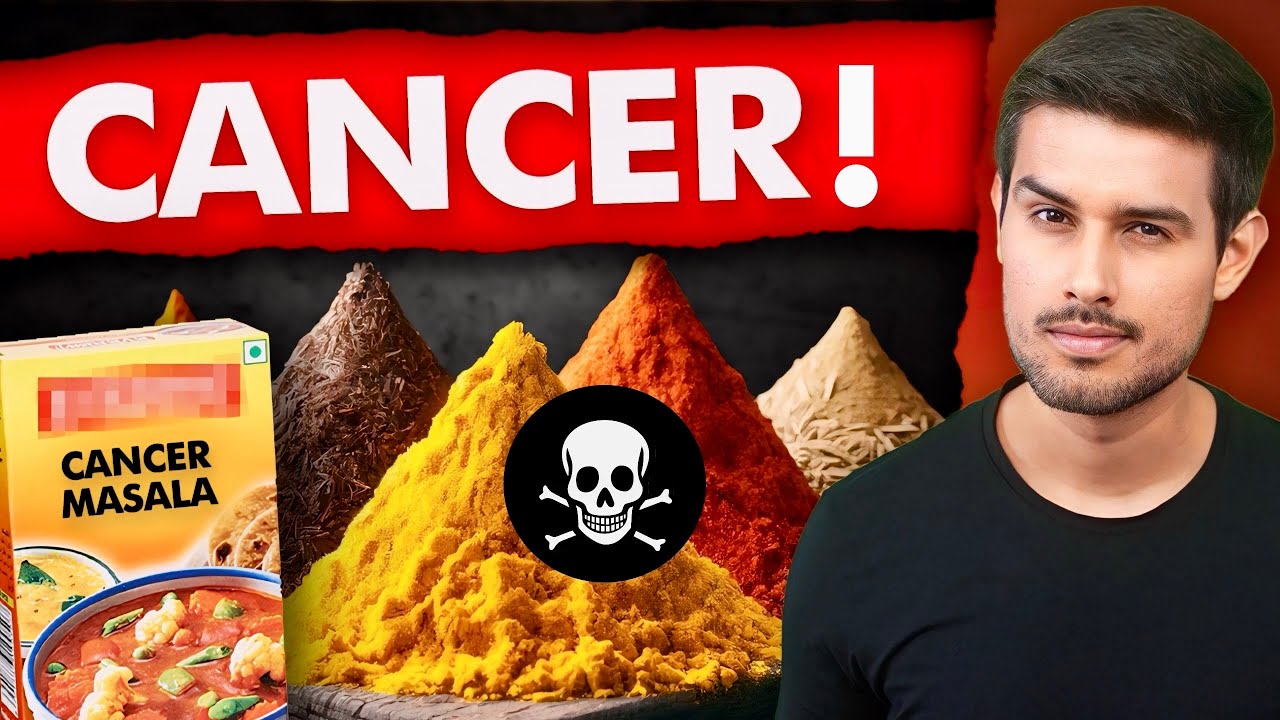
In-Depth Analysis of the Indian Masala Ban: A Comprehensive Overview
Introduction (Video attached in the end of the article)
Dhruv Rathee’s meticulous video analysis on the Indian masala ban is a testament to his unwavering commitment to investigative journalism and public welfare. With painstaking research and a fearless determination to uncover the truth, Rathee delves deep into the intricacies of the contamination crisis, shedding light on the systemic failures plaguing India’s food safety standards. His courage to challenge government narratives and hold authorities accountable for their negligence is commendable, serving as a beacon of transparency and accountability in an era rife with misinformation and propaganda. This article serves as an in-depth analysis of Rathee’s groundbreaking video, recognizing his invaluable contribution to public discourse and advocacy for systemic change.
In April 2024, the issue of contaminated spice mixes from prominent Indian brands shook the nation. The revelation of dangerously high levels of ethylene oxide in popular spice mixes like MDH’s Madras Curry Powder and Everest’s Fish Curry Masala raised significant concerns about food safety standards in India. This article aims to delve into the intricacies of the issue, highlighting the key points raised in Dhruv Rathee’s detailed analysis video while also critically examining the role of the BJP government in addressing food safety concerns.
Unveiling the Contamination Crisis
The contamination crisis surfaced when Hong Kong’s Food Safety Centre issued a notification, identifying ethylene oxide in several spice mixes, including Madras Curry Powder and Sambhar Masala. Subsequent independent testing by Singapore’s Food Agency confirmed the presence of ethylene oxide in Everest’s Fish Curry Masala, leading to bans in multiple countries, including Singapore, Hong Kong, and the Maldives.
Global Ramifications: European Union’s Ban on Indian Products
The issue extends beyond individual spice mixes, with the European Union’s Food Safety Authorities banning or recalling over 500 Indian products containing ethylene oxide in the past four years. This comprehensive ban encompasses a wide array of food items, from nuts and seeds to cereals and spices, signaling a systemic failure in ensuring food safety standards.
US Rejections and Salmonella Concerns
The United States’ rejection of 31% of MDH spice shipments due to Salmonella contamination further underscores the gravity of the situation. Despite the presence of stringent regulations in other countries, the Indian government’s lackluster response and failure to issue timely warnings have raised serious questions about its commitment to safeguarding public health.
Government’s Regulatory Oversight: A Critical Examination
Dhruv Rathee’s analysis sheds light on the regulatory framework governing food safety in India, emphasizing the pivotal role of agencies like the Food Safety and Standards Authority of India (FSSAI) and the Spice Board of India. However, the government’s inaction and reluctance to acknowledge the severity of the issue raise concerns about its accountability and commitment to public welfare.
Ethylene Oxide: A Lethal Carcinogen
Ethylene oxide, classified as a Group 1 carcinogen by the International Agency for Research on Cancer, poses significant health risks, including increased susceptibility to cancer and neurological damage. Despite its widespread use in fumigating spices, the lack of stringent regulations and inadequate post-harvest treatment protocols have contributed to its pervasive presence in Indian food products.
The Role of Ethylene Oxide in Food Sterilization
The video elucidates the process of ethylene oxide fumigation in food sterilization, highlighting the critical importance of proper aeration to remove residual traces of the chemical. Failure to execute adequate aeration processes can lead to the accumulation of harmful chemical residues, exacerbating health risks for consumers.
Government’s Complicity and Regulatory Failures
Criticism is levied against the Modi government for its complacency and failure to address the root causes of the contamination crisis. The government’s decision to increase permissible pesticide levels by tenfold, coupled with its reluctance to enforce stricter regulations, reflects a glaring disregard for public health concerns.
Corporate Accountability and Ethical Practices
The video underscores the accountability of food companies like MDH and Everest in ensuring the safety and quality of their products. Despite claims of adherence to regulatory standards, instances of contamination and adulteration raise questions about corporate ethics and responsibility towards consumers.
Farmers’ Plight and Environmental Implications
The detrimental impact of pesticide misuse on farmers’ health and environmental sustainability is highlighted, with alarming statistics revealing the disproportionately high mortality rates among Indian farmers due to pesticide-related illnesses. The government’s failure to prioritize farmer welfare and promote sustainable agricultural practices exacerbates the existing challenges faced by rural communities.
Organic Alternatives and Consumer Empowerment
While organic food presents a safer alternative, accessibility and affordability remain significant barriers for many consumers. The article advocates for consumer empowerment through informed decision-making and encourages support for local farmers to promote organic, pesticide-free produce.
Conclusion: Advocating for Systemic Change
In conclusion, Dhruv Rathee’s meticulous analysis of the Indian masala ban unveils a multifaceted crisis rooted in regulatory failures, corporate negligence, and governmental apathy. By shedding light on the systemic shortcomings plaguing India’s food safety infrastructure, the video underscores the urgent need for systemic reforms and greater accountability. As consumers, citizens, and advocates for public health, it is imperative to demand transparency, accountability, and ethical practices from all stakeholders involved in the food supply chain. Only through collective action and advocacy can we pave the way for a safer, healthier future for all.

